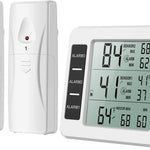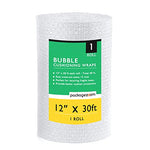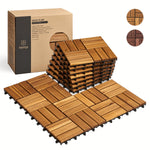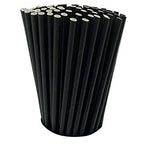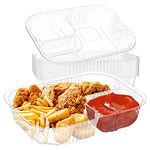You have no items in your shopping cart.
When it comes to securing and protecting goods for shipping or storage, stretch wrap is an essential tool. However, not all stretch wrap is created equal. Two commonly used types of stretch wrap are cast stretch wrap and blown stretch wrap. While they serve the same purpose, they have distinct differences that make them suitable for different applications. In this article, we will explore the difference between cast and blown stretch wrap, highlighting their unique characteristics, benefits, and best use cases.
What is Cast Stretch Wrap?
Cast stretch wrap, also known as cast film, is a popular choice for packaging applications. It is made by extruding a thin film of molten resin onto a highly polished chill roll. This process creates a film with excellent clarity, which makes it ideal for situations where visibility of the packaged product is necessary. Cast stretch wrap offers superior tear resistance and excellent load retention capabilities, ensuring that goods remain secure during transportation.
What is Blown Stretch Wrap?
On the other hand, blown stretch wrap, also referred to as blown film, is manufactured using the blown film extrusion process. This method involves blowing melted resin through a circular die, resulting in a bubble of film. The bubble is then cooled and collapsed, forming a durable and robust film. Blown stretch wrap has a higher degree of memory, allowing it to recover its original shape better than cast stretch wrap. This makes it particularly suitable for irregularly shaped loads or products with sharp edges.
Differences between Cast and Blown Stretch Wrap
Now that we understand the basic manufacturing processes, let's delve deeper into the specific differences between cast and blown stretch wrap:
1. Manufacturing Process
- Cast Stretch Wrap: Produced by extruding resin onto a polished chill roll.
- Blown Stretch Wrap: Created by blowing melted resin through a circular die.
2. Clarity and Visibility
- Cast Stretch Wrap: Offers excellent clarity, allowing for easy identification of packaged products.
- Blown Stretch Wrap: Typically has a haze due to its manufacturing process, reducing visibility.
3. Load Retention
- Cast Stretch Wrap: Provides exceptional load retention capabilities, ensuring goods remain secure during transit.
- Blown Stretch Wrap: Offers good load retention, but not as effective as cast stretch wrap.
4. Tear Resistance
- Cast Stretch Wrap: Exhibits superior tear resistance, making it less prone to punctures or tears.
- Blown Stretch Wrap: Although durable, it may be more susceptible to tearing compared to cast stretch wrap.
5. Memory and Recovery
- Cast Stretch Wrap: Has less elastic memory, which means it may not recover its original shape as well as blown stretch wrap.
- Blown Stretch Wrap: Demonstrates a higher degree of memory and better recovery after stretching.
6. Noise Level
- Cast Stretch Wrap: Produces less noise during application, ensuring a quieter working environment.
- Blown Stretch Wrap: Can generate more noise due to its cling characteristic when unwinding the roll.
7. Price
- Cast Stretch Wrap: Generally more cost-effective and widely available, making it a popular choice for various applications.
- Blown Stretch Wrap: Typically higher priced due to its manufacturing process, making it suitable for specific needs.
FAQs about Cast and Blown Stretch Wrap
Q: Can cast stretch wrap be used for irregularly shaped loads? A: While cast stretch wrap is suitable for many applications, it may not conform as well to irregularly shaped loads or products with sharp edges. In such cases, blown stretch wrap is recommended due to its superior recovery and memory.
Q: Which type of stretch wrap offers better visibility of the packaged product? A: Cast stretch wrap provides excellent clarity, allowing for easy identification and visibility of the packaged product.
Q: Is blown stretch wrap more expensive than cast stretch wrap? A: Yes, blown stretch wrap is typically higher priced due to its manufacturing process. However, it offers specific benefits that make it worth the investment for certain applications.
Q: Does blown stretch wrap produce more noise during application? A: Yes, blown stretch wrap can generate more noise due to its cling characteristic when unwinding the roll. If noise reduction is a priority, cast stretch wrap is a quieter alternative.
Q: Which type of stretch wrap is more tear-resistant? A: Cast stretch wrap exhibits superior tear resistance compared to blown stretch wrap. It is less prone to punctures or tears, ensuring better protection for goods.
Q: Can both cast and blown stretch wrap be recycled? A: Yes, both cast and blown stretch wrap can be recycled. However, the recycling process and availability of recycling facilities may vary depending on the specific material and local regulations.
Conclusion
In summary, the difference between cast and blown stretch wrap lies in their manufacturing processes, characteristics, and applications. Cast stretch wrap offers excellent clarity, tear resistance, and load retention, making it suitable for a wide range of packaging needs. Blown stretch wrap, with its superior recovery, memory, and conformability, is a better choice for irregularly shaped loads or products with sharp edges. Understanding these differences allows businesses to select the most appropriate stretch wrap type for their specific requirements, ensuring optimal protection and security during transportation or storage.


